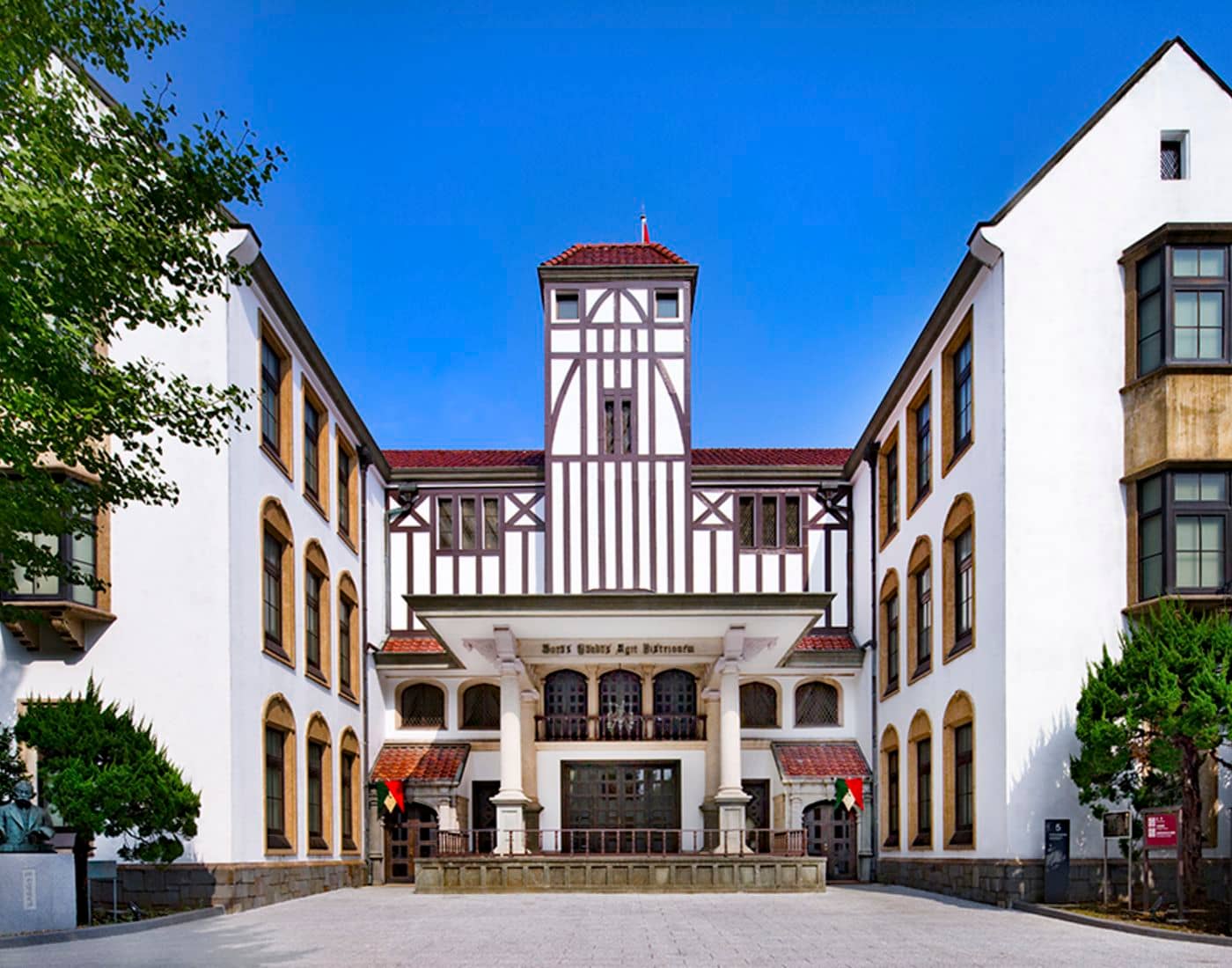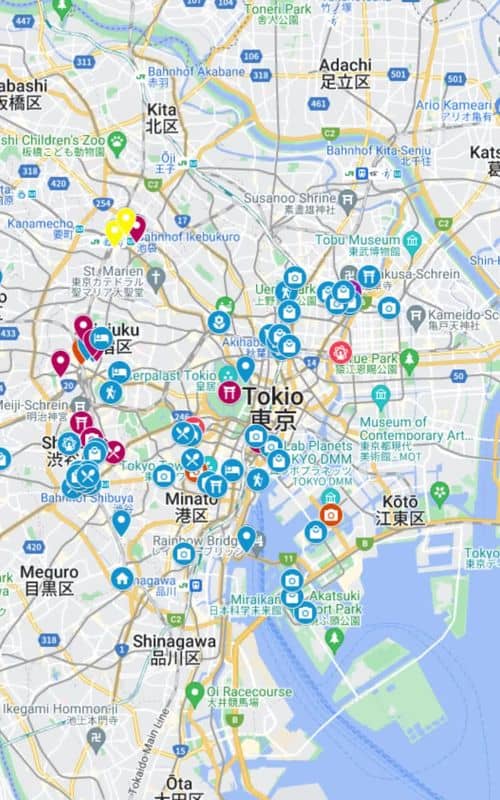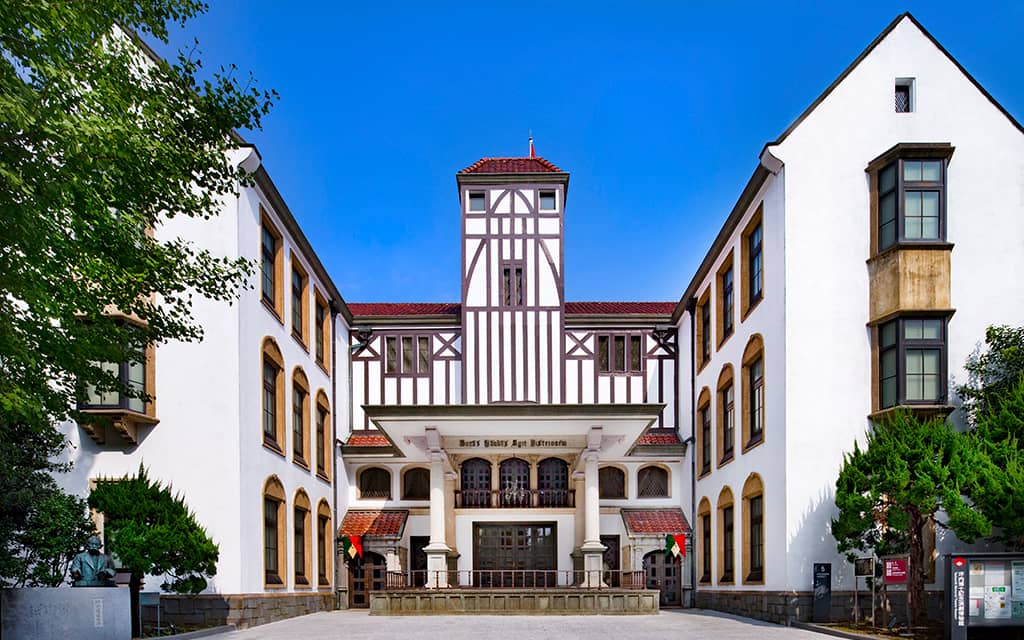Tsubouchi Memorial Theatre Museum
Step into an Elizabethan playhouse replica, housing a rich collection of Japanese theatre and film history.

Highlights
Must-see attractions

Social
From TikTok & Reddit
Best Time
Fewer crowds, more immersive
Tsubouchi Memorial Theatre Museum
Best Time
Fewer crowds, more immersive

Highlights
Must-see attractions
Step into an Elizabethan playhouse replica, housing a rich collection of Japanese theatre and film history.
"A must-visit for theatre buffs, with stunning architecture and deep historical exhibits."
🤫 No Photos Inside
Photography is not allowed inside the museum to protect the delicate exhibits. Enjoy the experience with your own eyes!
🎭 For Theatre Buffs
A must-visit for anyone passionate about theatre and film history, especially Japanese performing arts.
Highlights
Discover the most iconic attractions and experiences

Elizabethan Playhouse Architecture
Exterior and Interior
A stunning replica of an Elizabethan playhouse, complete with charming, low ceilings and elegant design.

Japanese Theatre & Film Exhibits
Exhibition Halls
Discover original scripts, miniature theaters, masks, and historical artifacts detailing the performing arts.

Tsubouchi's Shakespeare Translations
Exhibition Halls
See firsthand the renowned translations of Shakespeare by Professor Tsubouchi, a key figure in Japanese theatre.
Plans like a pro.
Thinks like you
Planning Your Visit
Embrace the Elizabethan Charm
Dive into Theatre History
Best Times
Insider Tips
from TikTok, Instagram & Reddit
🤫 No Photos Inside
Photography is not allowed inside the museum to protect the delicate exhibits. Enjoy the experience with your own eyes!
🎭 For Theatre Buffs
A must-visit for anyone passionate about theatre and film history, especially Japanese performing arts.
🏛️ Architectural Gem
Don't miss the building's unique Elizabethan playhouse design, a treat for architecture lovers.
📜 See Original Scripts
Get up close with original scripts and notes from famous Japanese playwrights and directors.
Tips
from all over the internet
🤫 No Photos Inside
Photography is not allowed inside the museum to protect the delicate exhibits. Enjoy the experience with your own eyes!
🎭 For Theatre Buffs
A must-visit for anyone passionate about theatre and film history, especially Japanese performing arts.
🏛️ Architectural Gem
Don't miss the building's unique Elizabethan playhouse design, a treat for architecture lovers.
📜 See Original Scripts
Get up close with original scripts and notes from famous Japanese playwrights and directors.
What Travellers Say
Reviews Summary
Visitors consistently praise the museum for its unique Elizabethan playhouse architecture and its rich collection of Japanese theatre and film history, including original scripts and Tsubouchi's Shakespeare translations. While photography is prohibited inside, the immersive experience and historical depth make it a highly recommended destination for enthusiasts.
"Local friend recommended as we are theatre buffs. Highly recommended if you’re keen theatre and film fan as the exhibits give good history of Japanese theatre and eventually, film eras. Can also see original copies of theatre scripts and notes by famous Japanese scriptwriters and directors. And of course, Prof Tsubouchi’s Shakespeare translations. The building is also such a wonderful replica of old Elizabethan architecture, right down to the low ceiling heights! No photos allowed of interior and rightly so. You have to go and see the place yourself to fully appreciate the efforts put into the exhibit curation and architecture."
TH Wong
"Good sized museum in a very distinctive looking building, with exhibits on Japanese and western theater."
Jacob Newcomb
"I went there when they had a limited time exhibition. Taking a photo is not allowed but for me it was an amazing experience. There are a lot of historical things like script, miniature theater, masks and other things. I love it there."
Primasari Dwi Prabayuni
What People Like
What People Dislike
Frequently Asked Questions
🚇 🗺️ Getting There
The museum is accessible via public transport. It's often recommended to use the train system in Tokyo. Check local transit apps for the most efficient routes from your location.
Information on parking availability can be limited. It's generally advised to rely on Tokyo's excellent public transportation network to reach the museum.
From Shinjuku, you can take various train lines. Consult a transit app for the quickest route, as it often involves a transfer.
🎫 🎫 Tickets & Entry
The museum often has a small or no entrance fee, making it an accessible cultural experience. It's best to check their official website for the most current admission details.
Opening hours can vary, especially for special exhibitions. It's recommended to check the museum's official website or local listings before your visit.
Given the often low or no entrance fee, advance booking might not be necessary. However, for special exhibitions, it's wise to inquire about ticket availability.
Yes, it's described as a 'small theatre museum,' making it ideal for a focused visit or if you're short on time.
🎫 🏛️ Onsite Experience
Expect a fascinating collection of historical items related to Japanese and Western theatre, including original scripts, miniature theaters, masks, and notes from famous directors.
No, photography is strictly prohibited inside the museum to preserve the exhibits. Visitors are encouraged to experience the displays firsthand.
The museum is uniquely designed to resemble an Elizabethan playhouse, featuring distinctive architecture and an elegant interior.
While specific interactive elements aren't always detailed, the exhibits often include miniature theaters and historical artifacts that offer an engaging visual experience.
A visit can be relatively short, often described as a 'small theatre museum,' making it perfect for a focused exploration of theatre history.
📸 📸 Photography
While interior photography is forbidden, the exterior of the museum, with its unique Elizabethan playhouse design, offers excellent photo opportunities.
The entire building's facade is a standout feature. Capture its distinctive shape and historical aesthetic from various angles.
For Different Travelers
Tailored advice for your travel style
👨👩👧 Families with Kids
🎭 Theatre & Film Enthusiasts
🏛️ Architecture Aficionados
Deep Dives
In-depth insights and expert knowledge
The Unique Architecture: An Elizabethan Echo
This unique structure was designed by architect Hideto Watanabe and completed in 1983. It stands as a testament to the enduring influence of Western theatre on Japanese culture, particularly through the work of Professor Tsubouchi Shoyo, a pioneer in modern Japanese drama and a renowned translator of Shakespeare. The building itself is an exhibit, a carefully crafted environment that complements the collections within.
While photography is prohibited inside to protect the artifacts, the exterior provides ample opportunities for stunning shots. It's a landmark that blends historical inspiration with modern museum functionality, making it a memorable part of any visit to Waseda University campus.
Exploring the Collections: A Journey Through Theatre History
A significant portion of the exhibits is dedicated to Professor Tsubouchi Shoyo, a pivotal figure in modern Japanese theatre. His extensive work, including his influential translations of Shakespeare's plays, is showcased, providing insight into his contributions to bridging Western and Japanese dramatic traditions. You can find original copies of his scripts and notes, offering a personal glimpse into his creative process.
Beyond Tsubouchi's work, the museum also covers various periods of Japanese theatre, from traditional forms to the development of modern drama and even early film. The curation is often praised for its thoughtfulness, making complex historical narratives accessible and engaging for enthusiasts and casual visitors alike.
Social
from TikTok, Instagram & Reddit